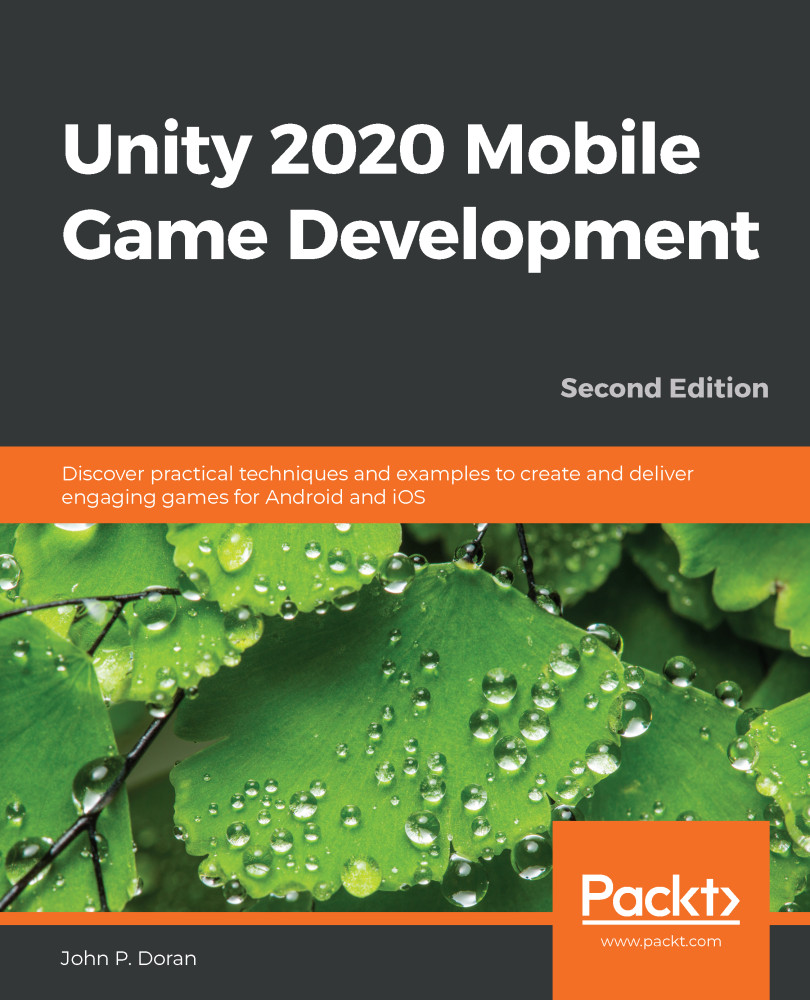As we start off on our journey of building mobile games using the Unity game engine, it's important that you are familiar with the engine itself before we dive into the specifics of building things for mobile platforms. Although there is a chance that you've already built a game and want to transition it to mobile, there will also be those of you who haven't touched Unity before or may not have used it in a long time. This chapter will act as an introduction to newcomers and a refresher for those coming back, and it will provide some best practices for those who are already familiar with Unity. While you may skip this chapter if you're already familiar with Unity, I think it's also a good idea to go through the project so that you know the thought processes behind why the project is made in the way that it is, so that you can keep it...
-
Book Overview & Buying

-
Table Of Contents

Unity 2020 Mobile Game Development - Second Edition
By :

Unity 2020 Mobile Game Development
By:
Overview of this book
Unity 2020 brings a lot of new features that can be harnessed for building powerful games for popular mobile platforms. This updated second edition delves into Unity development, covering the new features of Unity, modern development practices, and augmented reality (AR) for creating an immersive mobile experience. The book takes a step-by-step approach to building an endless runner game using Unity to help you learn the concepts of mobile game development.
This new edition also covers AR features and explains how to implement them using ARCore and ARKit with Unity. The book explores the new mobile notification package and helps you add notifications for your games. You’ll learn how to add touch gestures and design UI elements that can be used in both landscape and portrait modes at different resolutions. The book then covers the best ways to monetize your games using Unity Ads and in-app purchases before you learn how to integrate your game with various social networks. Next, using Unity’s analytics tools, you’ll enhance your game by gaining insights into how players like and use your game. Finally, you’ll take your games into the real world by implementing AR capabilities and publishing them on both Android and iOS app stores.
By the end of this book, you will have learned Unity tools and techniques and be able to use them to build robust cross-platform mobile games.
Table of Contents (14 chapters)
Preface
Building Your Game
 Free Chapter
Free Chapter
Project Setup for Android and iOS Development
Mobile Input/Touch Controls
Resolution-Independent UI
Advertising Using Unity Ads
Implementing In-App Purchases
Getting Social
Keeping Players Involved with Notifications
Using Unity Analytics
Making Your Title Juicy
Game Build and Submission
Augmented Reality
Other Books You May Enjoy
